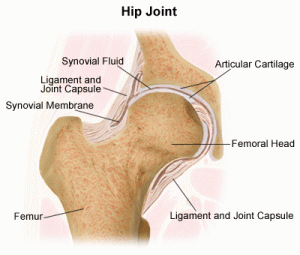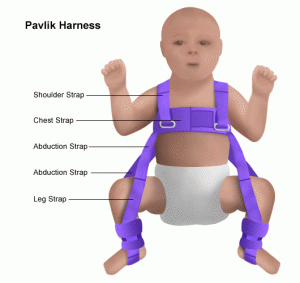Hip Hip Hooray for Larry the Cable Guy!

Dan Whitney, better known as his alter ego, Larry the Cable Guy, spoke to People magazine this week about challenges he faced with his son Wyatt, now 4 years old. Shortly after Wyatt was born, it was noticed that he had a condition called developmental his dislocation (sometimes called congenital hip dysplasia). Untreated, the disorder can lead to severe arthritis as the child grows. Wyatt was fitted with a special harness- called a Pavlik harness, which he had to wear 23 hours/day, to keep his leg properly positioned in the hip socket. Unfortunately, despite wearing the harness, Wyatt’s hip did not seem to improve. Whitney, and wife Kara, were faced with the possibility that Wyatt would either have to be in a body cast or undergo surgery to repair the problem. Fortunately, they met Dr. Chad Price, a pediatric orthopedist and an international authority on hip dysplasia at Orlando’s Arnold Palmer Medical Center. He suggested refitting the harness for Wyatt at eight months old, and he continued to wear the harness for the next 7 months! This time it worked.
After going through this experience, Dan and Kara set up the Git R Done Foundation which has given $5 million to start the International Hip Dysplasia Institute at Arnold Palmer Medical Center to help exchange and advance knowledge of the condition.
What is Developmental Hip Dysplasia?
Developmental Hip Dysplasia (DDH) is a dislocation of the hip joint, frequently found at birth or shortly thereafter. It can affect about 1 in 20 children. To understand DDH, we need to review the anatomy of the hip joint:
 The hip is a ball and socket joint. The ball, called the femoral head, forms the top part of the thigh bone (femur) and the socket (acetabulum) forms in the pelvis.
The hip is a ball and socket joint. The ball, called the femoral head, forms the top part of the thigh bone (femur) and the socket (acetabulum) forms in the pelvis.
The hip socket joint in a newborn is formed from cartilage, making it malleable, or moldable. It becomes bony and sturdier as the child grows. It is the fit of the thigh bone into the socket that ultimately shapes the hip joint into its proper adult shape. If the hip joint is too shallow, or the ligaments that hold the thigh bone in the socket too loose, then the thigh bone will not sit properly in the socket, and the hip joint will not develop properly as the child ages.
The cause is unknown, but genetic factors may play a role. Low levels of amniotic fluid in the womb during pregnancy can increase a baby’s risk of DDH. Other risk factors include:
- Being the first child
- Being female
- Breech delivery
- Family history of the disorder
Symptoms
There may be no symptoms. Symptoms that may occur can include:
- Different (asymmetric) leg positions
- Reduced movement on the side of the body with the dislocation
- Shorter leg on the side with the dislocation
- Uneven folds of thigh fat
After 3 months of age, the affected leg may turn outward or be shorter than the other leg.
Exams and Tests
Pediatric health care providers routinely screen all newborns and infants for hip dysplasia. There are several methods to detect a dislocated hip or a hip that is able to be dislocated.
The most common method of identifying the condition is a physical exam of the hips, which involves applying pressure while moving the hips. The health care provider listens for any clicks, clunks, or pops.
Ultrasound of the hip is used to confirm the problem. An x-ray of the hip joint may help diagnose the condition in older infants and children.
A hip that is truly dislocated in an infant should be detected at birth, but some cases are mild and symptoms may not develop until after birth, which is why multiple exams are recommended. Some mild cases are silent and cannot be found during a physical exam.
In early infancy, a non-surgical positioning device, called a Pavlik harness, is used to keep the legs apart and turned outward (frog-leg position). This device will usually hold the hip joint in place while the child grows. If there is a problem in maintaining proper position, a cast may be placed on the child’s leg and changed as the child grows.
Surgery may be necessary if early measures to put the joint back in place are unsuccessful or if the problem is first detected in an older child.
For more information, click here to go to our Resounding Health Casebook on Developmental Dysplasia of the Hip.

























1 Comment